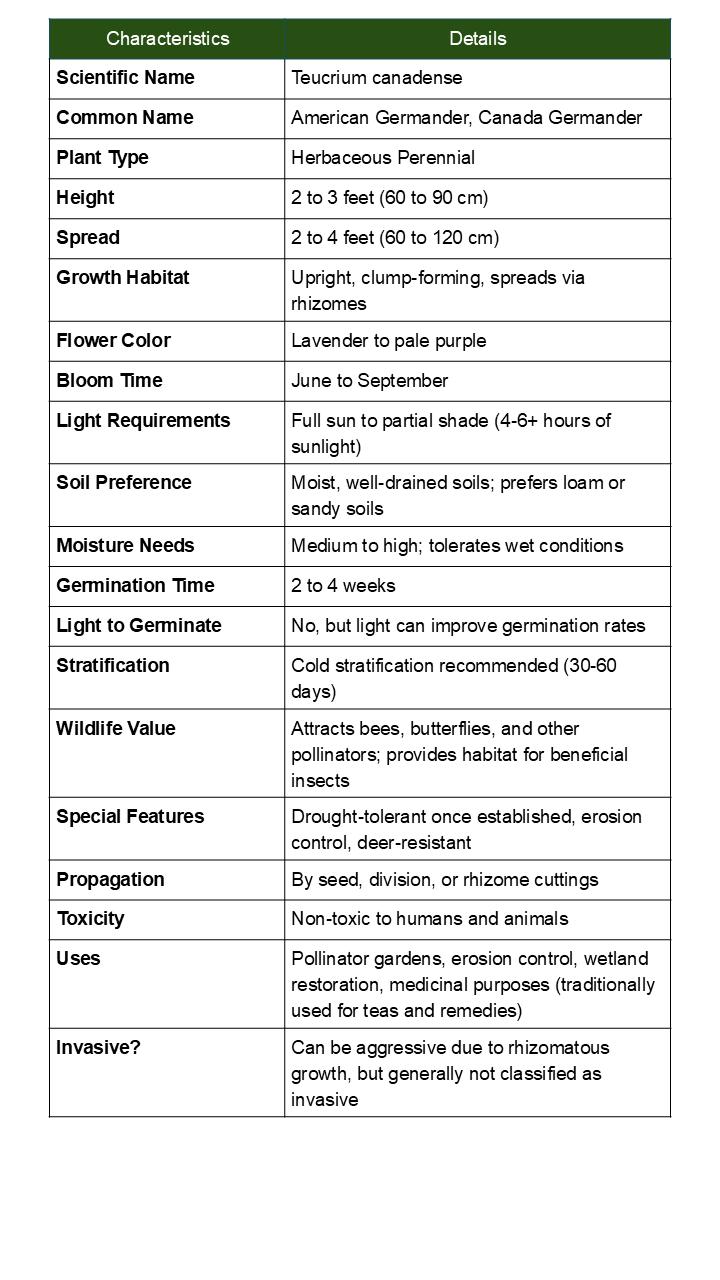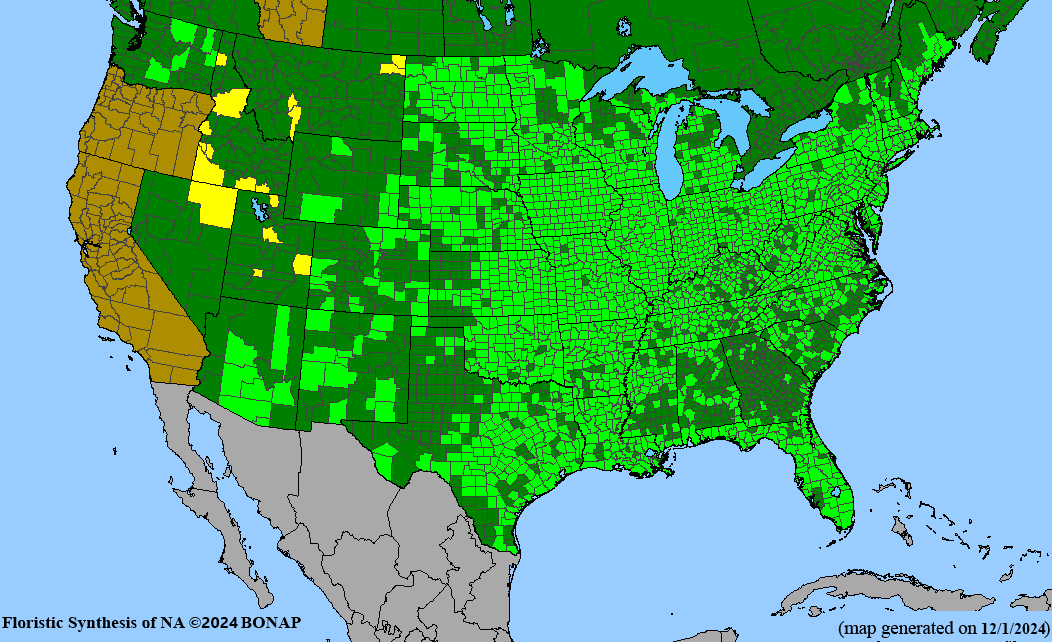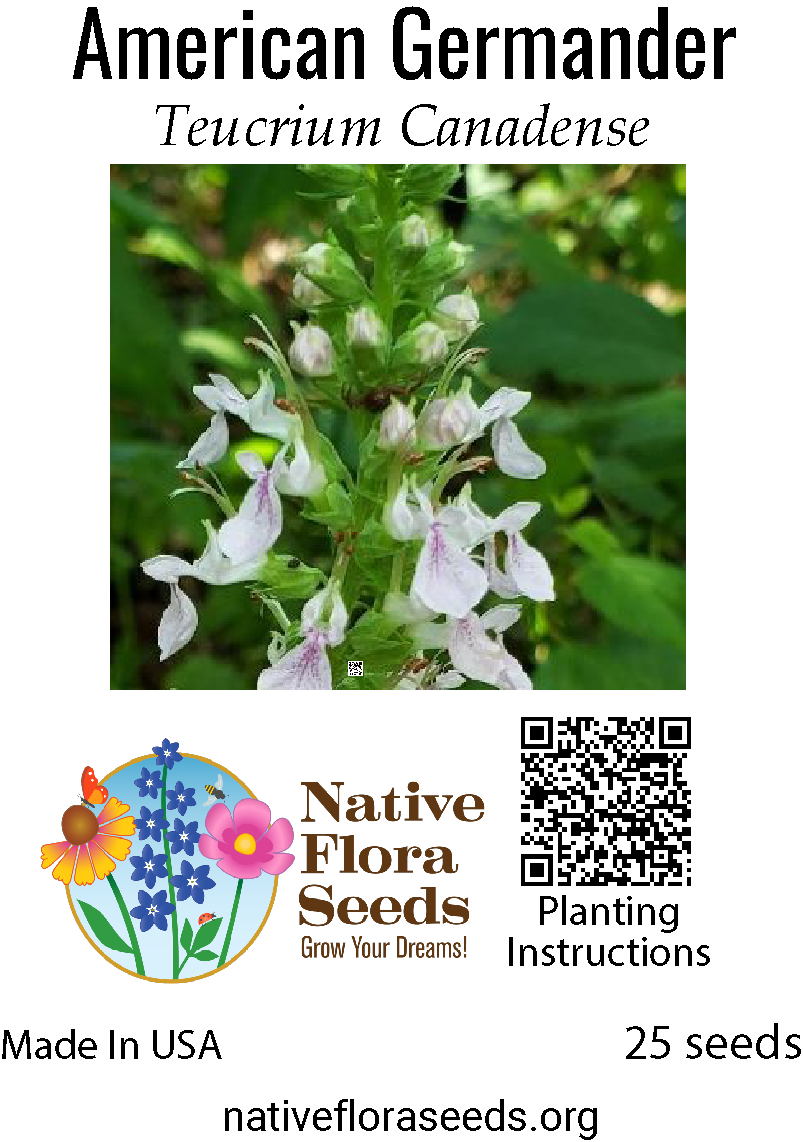American Germander Seeds - Native Teucrium Canadense | Wetland Mint Family Wildflower
Teucrium candadense is a native North American perennial: This flowering herb thrives in moist environments like meadows, marshes, and along streams. It readily pops up across the contiguous United States and much of Canada.
Distinctive features: Look for a robust plant standing up to 3 feet tall with a squarish stem and opposite leaves. The leaves are ovate or lanceolate, deeply veined and coarsely toothed, reaching up to 5 inches long. The most striking characteristic is the terminal inflorescence, a spike-like cluster of lavender-pink flowers borne at the stem tip.
Blooming beauty: American germander graces gardens with its showy blossoms from late June to September, attracting a variety of pollinators, especially long-tongued bees like bumblebees and honeybees.
Adaptable and resilient: This plant thrives in full sun or part shade, tolerates a range of soil types, and even withstands brief periods of flooding. Its fibrous root system and rhizomes help it anchor in soggy soils and spread over time, forming attractive clumps.
A word of caution: While American germander offers ornamental and ecological value, note that it can become mildly invasive in ideal conditions due to its spreading habit. Consider dividing established clumps regularly to maintain control.
Historical and medicinal uses: Native Americans traditionally used American germander for various medicinal purposes. However, be aware that it can cause liver damage, so internal consumption is not recommended. In the past, it was also used in teas and capsules for weight control and lowering cholesterol, but these practices have been discontinued due to safety concerns.
merican germander is a versatile and rewarding plant for any garden, especially those seeking native North American species and attracting pollinators. Just remember its potential for spreading and avoid internal consumption unless under the guidance of a qualified healthcare professional.



